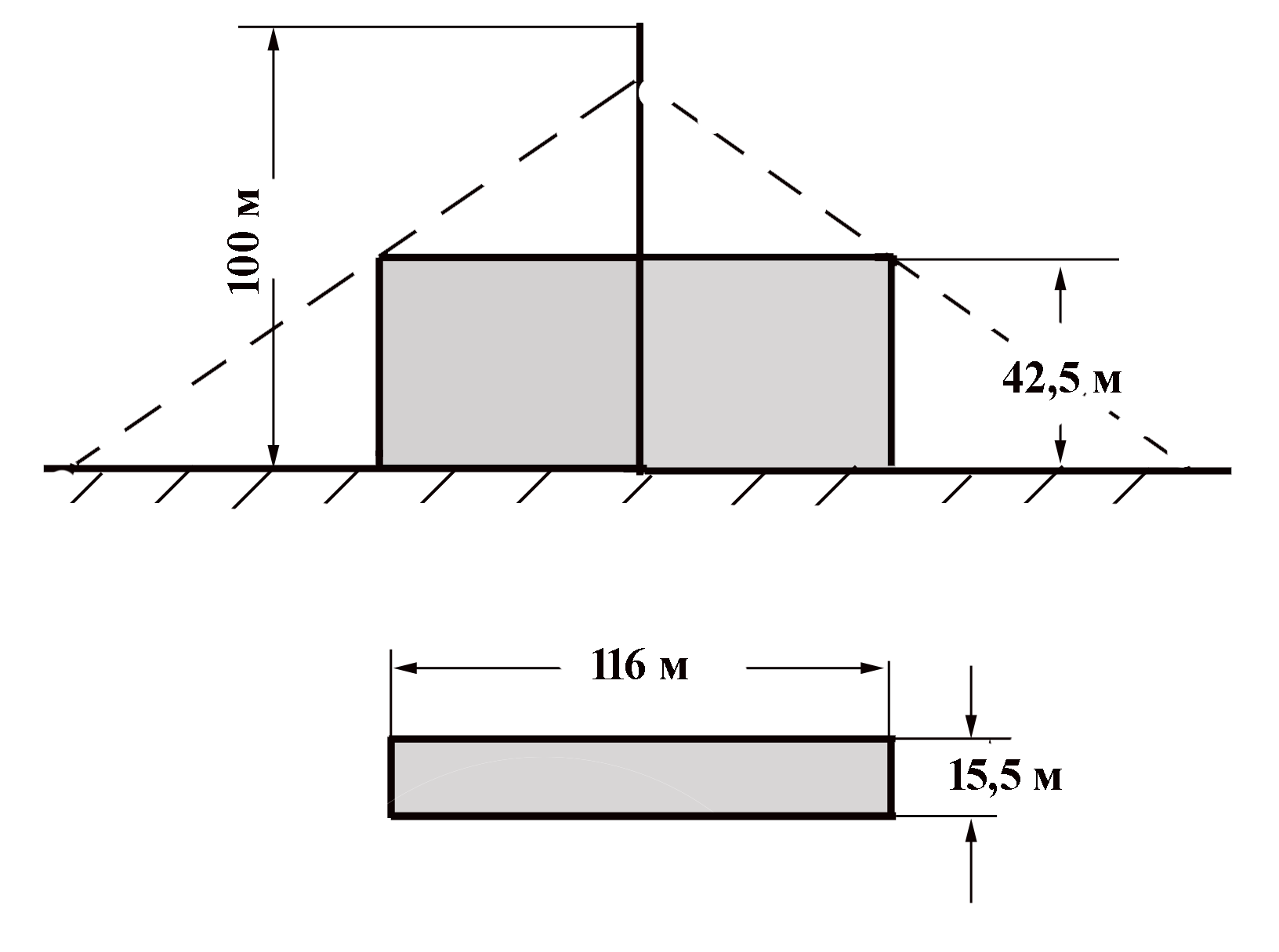From the series of articles "Complete Information on the Lightning Arrester Protection Zones".
Read Part 3. "Origin of Protection Zones Described in the Russian Regulatory Documents"
We can answer this question from the description above. Let's suppose that the entire object is located in the protection zone of a single lightning rod, as exemplified in Fig. 5. The lightning arrester height h = 100 m, and the lightning arrester provides the protection reliability P = 0.9, and thus,

Fig. 5.
100 м - 100 m
42,5 м - 42.5 m
116 м - 116 m
15,5 м - 15.5 m
the probability of the lightning breakthrough to the facility
Pbr = 1 – P
should not be more than 0.1. The calculation using the software for the building shown in Fig. 5 yields Pbr ≈ 0.055. Almost any reader can say: "This is not so bad!" A double margin in terms of reliability will not be too much, while the error in the reliability calculation at the level of a meaningful value is typical of the lightning protection. Probably, we cannot seriously criticize protection zones because of such a trifle or even refuse to use them in design calculations.
This is what we had to do if you forget that the top of a single lightning arrester is raised by 100 m above the ground level and increased the structure height by 60 m, thus providing a 5-fold collection of the lightnings share compared to the one that would strike the building without the lightning arrester. It should be reminded that the increase in the lightning strike number leads to almost the same increase in the amount of dangerous electromagnetic interference because, by catching the lightning, the lightning arrester hardly changes the level of electromagnetic impact. It is very important for the modern equipment.
Read further "5. Why is a Single Lightning Rod Not Reliable?"
Related Articles:



